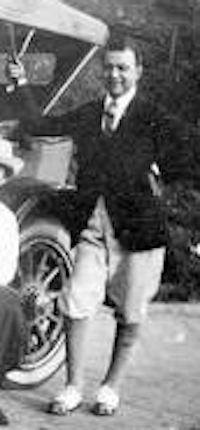
Good Morning POU!
In 1909, white Harlemites successfully lobbied the New York Public Library on 135th Street to ban blacks from using the facilities. In 1912, a group of wealthy white industrialists, including the department store magnate Erduin van der Horst Koch, forced the eviction of black tenants on 131st and 132nd Streets and blocked a black movie theater from opening on Lenox Avenue near 130th Street.

In 1911, John Nail, one of the top agents of the Afro-American Realty Company, formed his own real estate business. In his new endeavor he had one very wealthy client of note: Hannah Elias.

John Nail was a handsome man with brown skin, a round face and curly brown hair who wore bespoke suits and highly polished shoes. He came from a prestigious family and was the brother-in-law of the NAACP’s James Weldon Johnson. He and Elias became friends after her trial. With his smarts and clients like Elias, Nail had a plan to begin to bypass the color line at 130th Street and become the biggest real estate agent in Harlem.
Nail had a secret weapon: his pastor, Reverend Hutchens C. Bishop. Bishop presided over St. Philips Episcopal Church, of which Nail and Elias were both members. With his olive colored skin, blue eyes, straight nose and straight brown hair which he slicked tightly back, Bishop could pass for a white man.

Rev. Hutchens C. Bishop
He was descended from freed blacks in Baltimore and considered his church a “high church,” recruiting upper class African Americans such as Elias and Nail to his flock. (this church is mentioned in the book Our Kind of People). St. Philips Episcopal Church became famous among African Americans during the Civil War Draft Riots in 1863, when more than 100 black New Yorkers were killed by mobs and the property of famous African Americans such as Jeremiah Hamilton and James McCune Smith was attacked. During the riots, thousands of blacks sheltered in St. Philips, which had stone walls and thick wooden doors. In 1906, as his flock swelled to more than a thousand souls, Bishop decided to move to a larger church in Harlem. In 1906, Nail and Bishop sold his church building in Hell’s Kitchen for $600,000 ($16.2 million) and purchased a new church on 135th Street in “white Harlem”.
Bishop went by himself to purchase the church and put the building into his own name. Looking into the reverend’s sparkling blue eyes, the sellers never imagined they were selling to a black man, let alone a large black church congregation. After purchasing the church, Bishop and Nail brought six more apartments in “white Harlem” using the same scheme. After Nail established his own company with Elias’s financial backing, he deployed Bishop as a straw buyer, gobbling up dozens of properties.

St. Philips Episcopal Church on 134th Street
Once they had acquired properties, Nail began renting and selling them to African Americans. His first customers were upper class African Americans from the neighborhoods of Williamsburg and downtown Brooklyn. Nail sold them lots for $1,000 to $3,000 to build homes on. After the Drafts Riots, affluent African Americans, many of whose families and businesses had been attacked by mobs, had fled Manhattan for Brooklyn. Nail successfully recruited dozens of affluent black families back to Manhattan, promising them that Harlem would be a haven for blacks on the island. Later he bought and built apartment buildings and rented to working class African Americans who had been turned away by white landlords.
Between 1911 and 1914, Nail bought up more than $1.1 million ($27.6 million) worth of property in Harlem. With the help of Elias and Bishop, he helped break the color line at 130th Street and turn Harlem into a bustling black enclave.

